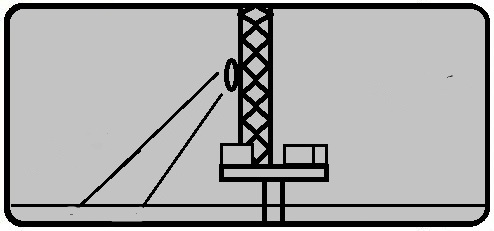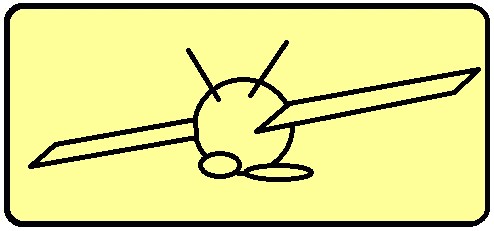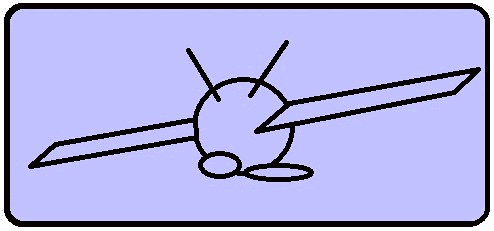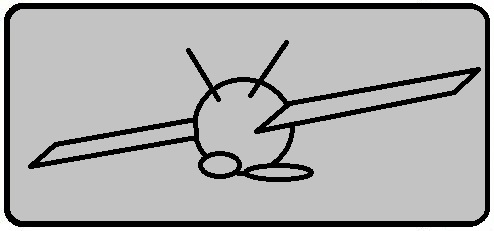|
Size: 4772
Comment:
|
Size: 4511
Comment:
|
| Deletions are marked like this. | Additions are marked like this. |
| Line 4: | Line 4: |
| = FEW³O am IfM = FEW³O steht für '''Fe'''rnerkundung von '''W'''echsel'''w'''irkungen an der '''W'''asser'''o'''berfläche. Mitglieder der Gruppe beschäftigen sich mit Messungen von Austauschprozessen im Labor (Windwellenkanal), mit Feldmessungen der Radarrückstreuung von der Meeresoberfläche oder mit der systematischen Analyse von Satellitenbildern, vor allem von Radaraufnahmen küstennaher Seegebiete. |
= FEW³O at IfM = FEW³O stands for '''Fe'''rnerkundung von '''W'''echsel'''w'''irkungen an der '''W'''asser'''o'''berfläche (Remote sensing of interactions at the water surface). We perform systematic analyses of satellite imagery, particularly of synthetic aperture radar (SAR) imagery of coastal regions, field campaigns involving measurements of the radar backscattering from the sea surface, and lab experiments in the University's wind-wave tank. |
| Line 10: | Line 10: |
| == Windwellenkanal == Der Windwellenkanal der Uni Hamburg wurde in den frühen 1970er Jahren gebaut und befindet sich auf dem Gelände der Bundesanstalt für Wasserbau, Außenstelle Küste, in Hamburg-Rissen. Hier wurden Messungen zur Wellendämpfung durch monomolekulare Oberflächenfilme, zur Radarrückstreuung und zu Transferprozessen an der Grenzfläche Wasser/Luft durchgeführt. Der Windwellenkanal dient heutzutage vor allem der Ausbildung (Ozeanische Messübungen) und der Lehre (BSc- und MSc-Arbeiten). |
== Wind-Wave Tank == The University's wind-wave tank was built in the early 1970s and is located at the Federal Institute of Waterways Engineering in Hamburg-Rissen. We have been performing measurements of wave damping by monomolecular surface films, of the radar backscattering from the water surface, and of exchange processes across the water-air interface. Nowadays, the wind-wave tank is primarily used for educational purposes such as practical courses and BSc-/MSc studies. |
| Line 13: | Line 14: |
| [[FEW3O/WWK|{{attachment:WWK_gr.jpg|FEW3O/WWK|height="50"}}]] Zu den Wiki-Seiten des WWK geht's [[FEW3O/WWK|hier]]. | [[FEW3O/WWK|{{attachment:WWK_gr.jpg|FEW3O/WWK|height="50"}}]] To the wind-wave tank's Wiki pages [[FEW3O/WWK|this way]]. |
| Line 17: | Line 18: |
| Systematische Messungen der Radarrückstreuung von der Wasseroberfläche und ihre Auswertungen tragen dazu bei, die Rückstreumechanismen besser zu verstehen und Methoden zu entwickeln, aus dem Rückstreusignal ozeanische und atmosphärische Parameter abzuleiten. Messungen mit einem Scatterometer im Labor wurden bereits in den 1980er Jahren durchgeführt, in den 1990er Jahren wurden umfangreiche Messungen in der Deutschen Bucht von Hubschraubern aus durchgeführt. | Systematic measurements of the radar backscattering from the sea surface and their analyses contribute to a better understanding of backscattering mechanisms in general and to the development of methods to derive oceanic and atmospheric parameters from such measurements. Lab experiments deploying a scatterometer were performed in the 1980s, and in the 1990s field campaigns were performed in the German Bight of the North Sea, deploying a scatterometer from board a helicopter |
| Line 20: | Line 21: |
| Von Juli 2008 bis Oktober 2011 fanden auf der Forschungsplattform FINO2 in der Westlichen Ostsee systematische Messungen der Radarrückstreuung von der Wasseroberfläche statt. Fest installiert war dort die Plattformversion des Multi³Scat der Uni Hamburg, mit dem in 5 Radar-Frequenzbändern und 4 Polarisationskombinationen seit September 2011 rund um die Uhr Messungen gemacht wurden. Die Messungen fanden statt im Rahmen des nationalen Verbundprojektes [[http://sopran.pangaea.de/|SOPRAN]]. Einige Informationen zu FINO2 findet man [[http://www.fino2.de|hier]]. | From July 2008 until October 2011 systematic measurments of the radar backscattering from the sea surface were performed from the research platform FINO-2 in the Western baltic Sea. On the platform the University's scatterometer Multi³Scat was installed, allowing measurements at 5 frequency bands and at 4 polarization combinations. Those measurements were done in the frame of the national joint project [[http://sopran.pangaea.de/|SOPRAN]]. Some info on FINO-2 can be found [[http://www.fino2.de|here]]. |
| Line 22: | Line 23: |
| [[FEW3O/FINO2|{{attachment:FINO_gr.jpg|FEW3O/FINO2|height="50"}}]] Zu den Wiki-Seiten der Messungen auf FINO2 geht's [[FEW3O/FINO2|hier]]. | [[FEW3O/FINO2|{{attachment:FINO_gr.jpg|FEW3O/FINO2|height="50"}}]] To the wiki pages of the FINO-2 measurements [[FEW3O/FINO2|this way]]. |
| Line 26: | Line 27: |
| Regelmäßig werden Satellitenbilder ausgewertet, vor allem solche, die mit einem Synthetik-Apertur-Radar (SAR) aufgenommen wurden. Diese hochauflösenden aktiven Mikrowellensensoren werden genutzt, um aus räumlichen Variationen der Bildintensität auf Rauigkeitsvariationen der Wasseroberfläche und die dafür verantwortlichen hydrodynamischen Phänomene zu schließen. Das wird zum Beispiel genutzt zur Identifizierung von Oberflächenfilmen auf dem Meer und zur Klassifizierung von trocken gefallenen Wattgebieten (dort ist die Watt- und nicht die Wasseroberfläche Rückstreuer). | We are regularly analysing satellite images, particularly when acquired with synthetic aperture radar (SAR) sensors. These high-resolution active microwave sensors are used to derive hydrodynamic processes from sea surface roughness variations that manifest in spatial variations of the SAR image intensity. This is done, e.g., to identify different marine surface films or to help classifying different sediment types on exposed intertgidal flats. |
| Line 28: | Line 30: |
| .[[FEW3O/SARWatt|{{attachment:Sat_yel.jpg|FEW3O/SARWatt|height="50"}}]] Zu den Wiki-Seiten der SAR-Analysen '''trocken gefallener Wattgebiete''' geht's [[FEW3O/SARWatt|hier]]. | .[[FEW3O/SARWatt|{{attachment:Sat_yel.jpg|FEW3O/SARWatt|height="50"}}]] To the wiki pages of SAR analyses of exposed intertidal flats [[FEW3O/SARWatt|this way]]. |
| Line 30: | Line 32: |
| SAR-Aufnahmen werden bereits für die operationelle Ölüberwachung genutzt. Solche Aufnahmen können statistisch ausgewertet werden, um dadurch z.B. Aussagen über die mittlere Verschmutzung bestimmter Seegebiete machen zu können. Hierzu findet beispielsweise eine Zusammenarbeit mit indonesichen Kollegen statt. | SAR images are already being used for the operational oil-spill monitoring. These images are used for comprehensive statistical analyses that allow, e.g., an assessment of the mean oil pollution of dedicated coastal regions and its seasonal variability. Such analses were recently done for Indonesian coastal waters. |
| Line 32: | Line 34: |
| .[[IndoNACE|{{attachment:Sat_li.jpg|IndoNACE|height="50"}}]] Zu den Wiki-Seiten der '''Statistischen Auswertung''' von Ölverschmutzung unter Verwendung von SAR-Daten geht's [[IndoNACE|hier]]. | .[[IndoNACE|{{attachment:Sat_li.jpg|IndoNACE|height="50"}}]] To the wiki pages of the '''statistical analyses''' of oil pollution based on SAR imagery [[IndoNACE|this way]]. |
| Line 34: | Line 36: |
| SAR-Aufnahmen können - zusammen mit Aufnahmen anderer Sensoren - genutzt werden, um submeso- und mesoskalige turbulente Phänomene an der Meeresoberfläche zu detektieren und ihre räumliche und zeitliche Variabilität zu bestimmen. Zusammenarbeiten auf diesem Gebiet gibt es mit Wissenschaftlern am FB Informatik, sowie mit Kolleginnen aus Moskau und Liège. | SAR images, along with data acquired by other sensors, can be used to detect submesoscale and mesoscale turbulent processes at the water surface and to identify their spatio-temporal variation. Collaborative studies have been performed together with colleagues from the University's Department of Informatics, from Moscow, Russia, and from Liège, Belgium. |
| Line 36: | Line 38: |
| .[[FEW3O/SAREddies|{{attachment:Sat_tur.jpg|FEW3O/SAREddies|height="50"}}]] Zu den Wiki-Seiten der Analysen '''submeso- und mesoskaliger Phänomene''' mit SAR-Daten geht's [[FEW3O/SAREddies|hier]]. | .[[FEW3O/SAREddies|{{attachment:Sat_tur.jpg|FEW3O/SAREddies|height="50"}}]] To the wiki pages of the analyses of '''submeso- and mesoscale phenomena''' using SAR data [[FEW3O/SAREddies|this way]]. |
| Line 38: | Line 40: |
| === Satellitenbild-Datenbank === [[FEW3O/FEW3O_SatDB|{{attachment:Sat_gr.jpg|FEW3O/FEW3O_SatDB|height="50"}}]] Informationen zu den derzeit in der FEW³O-Gruppe vorhandenen '''SAR-Aufnahmen''' sind in einer [[FEW3O/FEW3O_SatDB|Datenbank]] zusammengefasst. |
=== SAR image database === [[FEW3O/FEW3O_SatDB|{{attachment:Sat_gr.jpg|FEW3O/FEW3O_SatDB|height="50"}}]] Information on the available '''SAR imagery''' are kept in a [[FEW3O/FEW3O_SatDB|database]]. |
| Line 42: | Line 44: |
| == Allgemeines, Interne Seiten == [[FEW3O/FEW3O_intern|{{attachment:intern_r.jpg|FEW3O/FEW3O_intern|height="50"}}]] ...zu den Internen FEW³O-Seiten geht's [[FEW3O/FEW3O_intern|hier]]. |
== Miscellaneous, Internal Pages == [[FEW3O/FEW3O_intern|{{attachment:intern_r.jpg|FEW3O/FEW3O_intern|height="50"}}]] ...to the Internal FEW³O pages [[FEW3O/FEW3O_intern|this way]]. |
FEW³O at IfM
FEW³O stands for Fernerkundung von Wechselwirkungen an der Wasseroberfläche (Remote sensing of interactions at the water surface). We perform systematic analyses of satellite imagery, particularly of synthetic aperture radar (SAR) imagery of coastal regions, field campaigns involving measurements of the radar backscattering from the sea surface, and lab experiments in the University's wind-wave tank.
Contents
Wind-Wave Tank
The University's wind-wave tank was built in the early 1970s and is located at the Federal Institute of Waterways Engineering in Hamburg-Rissen. We have been performing measurements of wave damping by monomolecular surface films, of the radar backscattering from the water surface, and of exchange processes across the water-air interface. Nowadays, the wind-wave tank is primarily used for educational purposes such as practical courses and BSc-/MSc studies.
![]() To the wind-wave tank's Wiki pages this way.
To the wind-wave tank's Wiki pages this way.
Scatterometer
Systematic measurements of the radar backscattering from the sea surface and their analyses contribute to a better understanding of backscattering mechanisms in general and to the development of methods to derive oceanic and atmospheric parameters from such measurements. Lab experiments deploying a scatterometer were performed in the 1980s, and in the 1990s field campaigns were performed in the German Bight of the North Sea, deploying a scatterometer from board a helicopter
Forschungsplattform FINO2
From July 2008 until October 2011 systematic measurments of the radar backscattering from the sea surface were performed from the research platform FINO-2 in the Western baltic Sea. On the platform the University's scatterometer Multi³Scat was installed, allowing measurements at 5 frequency bands and at 4 polarization combinations. Those measurements were done in the frame of the national joint project SOPRAN. Some info on FINO-2 can be found here.
 To the wiki pages of the FINO-2 measurements this way.
To the wiki pages of the FINO-2 measurements this way.
Satellitenbilder
We are regularly analysing satellite images, particularly when acquired with synthetic aperture radar (SAR) sensors. These high-resolution active microwave sensors are used to derive hydrodynamic processes from sea surface roughness variations that manifest in spatial variations of the SAR image intensity. This is done, e.g., to identify different marine surface films or to help classifying different sediment types on exposed intertgidal flats.
 To the wiki pages of SAR analyses of exposed intertidal flats this way.
To the wiki pages of SAR analyses of exposed intertidal flats this way.
SAR images are already being used for the operational oil-spill monitoring. These images are used for comprehensive statistical analyses that allow, e.g., an assessment of the mean oil pollution of dedicated coastal regions and its seasonal variability. Such analses were recently done for Indonesian coastal waters.
 To the wiki pages of the statistical analyses of oil pollution based on SAR imagery this way.
To the wiki pages of the statistical analyses of oil pollution based on SAR imagery this way.
SAR images, along with data acquired by other sensors, can be used to detect submesoscale and mesoscale turbulent processes at the water surface and to identify their spatio-temporal variation. Collaborative studies have been performed together with colleagues from the University's Department of Informatics, from Moscow, Russia, and from Liège, Belgium.
 To the wiki pages of the analyses of submeso- and mesoscale phenomena using SAR data this way.
To the wiki pages of the analyses of submeso- and mesoscale phenomena using SAR data this way.
SAR image database
 Information on the available SAR imagery are kept in a database.
Information on the available SAR imagery are kept in a database.
Miscellaneous, Internal Pages
 ...to the Internal FEW³O pages this way.
...to the Internal FEW³O pages this way.
